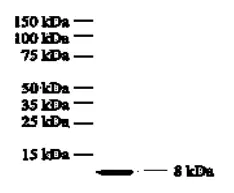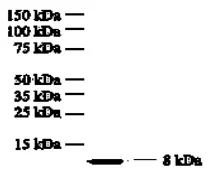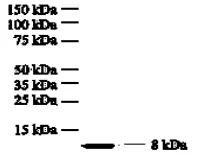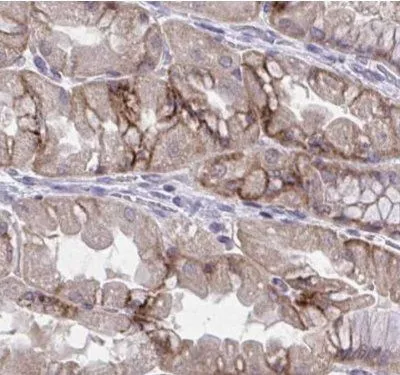
IHC-P analysis of human testis tissue using GTX17483 CXCL8 / IL8 antibody.
CXCL8 / IL8 antibody
GTX17483
ApplicationsWestern Blot, ImmunoHistoChemistry, ImmunoHistoChemistry Paraffin
Product group Antibodies
TargetCXCL8
Overview
- SupplierGeneTex
- Product NameCXCL8 / IL8 antibody
- Delivery Days Customer9
- Application Supplier NoteWB: 1:500-2000. IHC-P: 1:50-200. *Optimal dilutions/concentrations should be determined by the researcher.Not tested in other applications.
- ApplicationsWestern Blot, ImmunoHistoChemistry, ImmunoHistoChemistry Paraffin
- CertificationResearch Use Only
- ClonalityPolyclonal
- Concentration1 mg/ml
- ConjugateUnconjugated
- Gene ID3576
- Target nameCXCL8
- Target descriptionC-X-C motif chemokine ligand 8
- Target synonymsGCP-1, GCP1, IL8, LECT, LUCT, LYNAP, MDNCF, MONAP, NAF, NAP-1, NAP1, SCYB8, interleukin-8, T-cell chemotactic factor, alveolar macrophage chemotactic factor I, beta endothelial cell-derived neutrophil activating peptide, beta-thromboglobulin-like protein, chemokine (C-X-C motif) ligand 8, emoctakin, granulocyte chemotactic protein 1, interleukin 8, lung giant cell carcinoma-derived chemotactic protein, lymphocyte derived neutrophil activating peptide, monocyte-derived neutrophil chemotactic factor, monocyte-derived neutrophil-activating peptide, neutrophil-activating peptide 1, small inducible cytokine subfamily B, member 8, tumor necrosis factor-induced gene 1
- HostRabbit
- IsotypeIgG
- Protein IDP10145
- Protein NameInterleukin-8
- Scientific DescriptionThe protein encoded by this gene is a member of the CXC chemokine family and is a major mediator of the inflammatory response. The encoded protein is secreted primarily by neutrophils, where it serves as a chemotactic factor by guiding the neutrophils to the site of infection. This chemokine is also a potent angiogenic factor. This gene is believed to play a role in the pathogenesis of bronchiolitis, a common respiratory tract disease caused by viral infection. This gene and other members of the CXC chemokine gene family form a gene cluster in a region of chromosome 4q. [provided by RefSeq, Aug 2017]
- Storage Instruction-20°C or -80°C,2°C to 8°C
- UNSPSC12352203

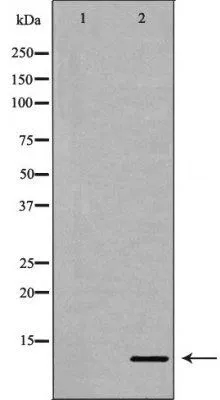



![ICC/IF analysis of U-87 MG cells treated 1 uM thapsigargin for 24 hours using GTX15763 CXCL8 / IL8 antibody [3IL8-H10]. Panel e is untreated cell with no signal. Panel f represents control cells with no primary antibody to assess background. Green : Primary antibody Blue : Nuclei Red : Actin Fixation : 4% paraformaldehyde Permeabilization : 0.1% Triton X-100 for 10 minute](https://www.genetex.com/upload/website/prouct_img/normal/GTX15763/GTX15763_298_ICC-IF_w_23060620_274.webp)
